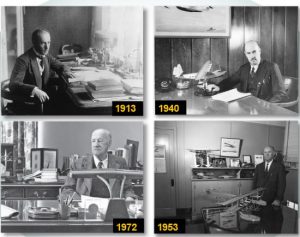
Igor I. Sikorsky’s Office
Igor Sikorsky’s office has been preserved as when he occupied it from 1956 to 1972. This issue highlights the artifacts in his office collected during his career.
Igor Sikorsky left Russia in February 1918 in the midst of the Russian Revolution, leaving behind family and credentials as a General of the Russian Army. He spent a short period of time in Paris designing a bomber called the I.S 27 “Atlas” for the French Air Service. When that work was discontinued following the Armistice ending World War I, he immigrated to the United States. America inspired him with its progressively developing nature and who’s wide open geographic expanses that offered a potential market for air travel. On March 30, 1919, at just under 30 years of age, with a few hundred dollars and speaking very little English, Igor Sikorsky arrived in New York.
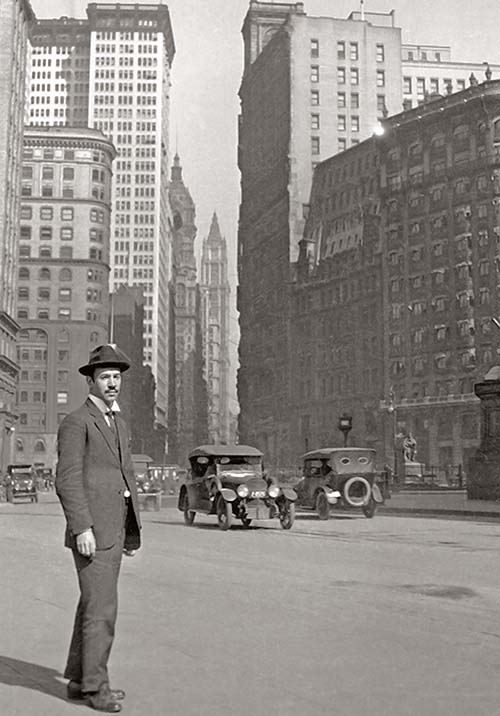
Despite his wide-spread reputation and success within the aviation industry in Europe, Igor Sikorsky faced many challenges getting established in the United States. American military aviation was in a post-war slump, and commercial aviation was still in its infancy. Igor Sikorsky’s limited English made it difficult for him to pitch technical plans to potential investors. Through a cohort of fellow Russian emigrants and friends, he fortunately found employment in 1919 as chief engineer for Hannevig Aircraft Corp. in New York (renamed Hannevig-Sikorsky Aircraft Company upon his joining), where plans were being made for a new airplane capable of transporting a payload of 12,000 lbs at 90 miles per hour – the S-28. Unfortunately, the company was dissolved before manufacturing could begin. Igor Sikorsky then worked for a short time at McCook Field in Dayton, Ohio, designing a bomber for the U.S. Army Air Service, but this project too was unfortunately discontinued for lack of funding.

Nearly out of funds himself, Igor Sikorsky returned to New York, still optimistic with a firm belief in a potential future market of long-range commercial air transport. He realized that reliance on military contracts was risky and with minimal opportunities in the immediate postwar years, he focused his ventures once again on designing freight and passenger aeroplanes. In February 1920, Igor Sikorsky formed a partnership with Ivan Prokofieff and Joseph Michael, but this too was unfortunately short lived and dissolved due to insufficient financial backing.
Requiring a source of income, Igor began teaching night courses in mathematics and astronomy at the Russian Collegiate Institute upon encouragement from fellow Russian immigrants. Although he had no professional training as a teacher, he was fondly respected by his students. He became involved in the Nauka (Science) Society, through which he met not only his future wife Elizabeth Semion, but also many fellow science and aviation enthusiasts.
On March 5, 1923, Sikorsky Aero Engineering Corporation was officially established, with financial backing and officers including (in addition to Igor Sikorsky himself): W. A. Barry, J. V. Kravchenko, V. V. Utgoff, N. P. Stookalo, S. V. Rachmaninoff, and L. A. Shoumatoff. Furthermore, a team, many of whom were similarly Russian immigrants, and had training as naval officers, pilots, engineers, and mechanics, provided additional financial contributions and made up a large part of the original work force. Michael and Serge Gluhareff, Michael Buivid, Robert Labensky, Nicholas Solovioff, Nicholas Glad, D. D. Viner, Victor Koodroff, and Boris Sergievsky were among many of the loyal, often going without paychecks in the early days, motivated by their enthusiasm, confidence, and trust in Igor’s vision. It was with the support and dedication of this team, that Igor Sikorsky’s S-29A, and his establishment within the American aviation industry, came to fruition.
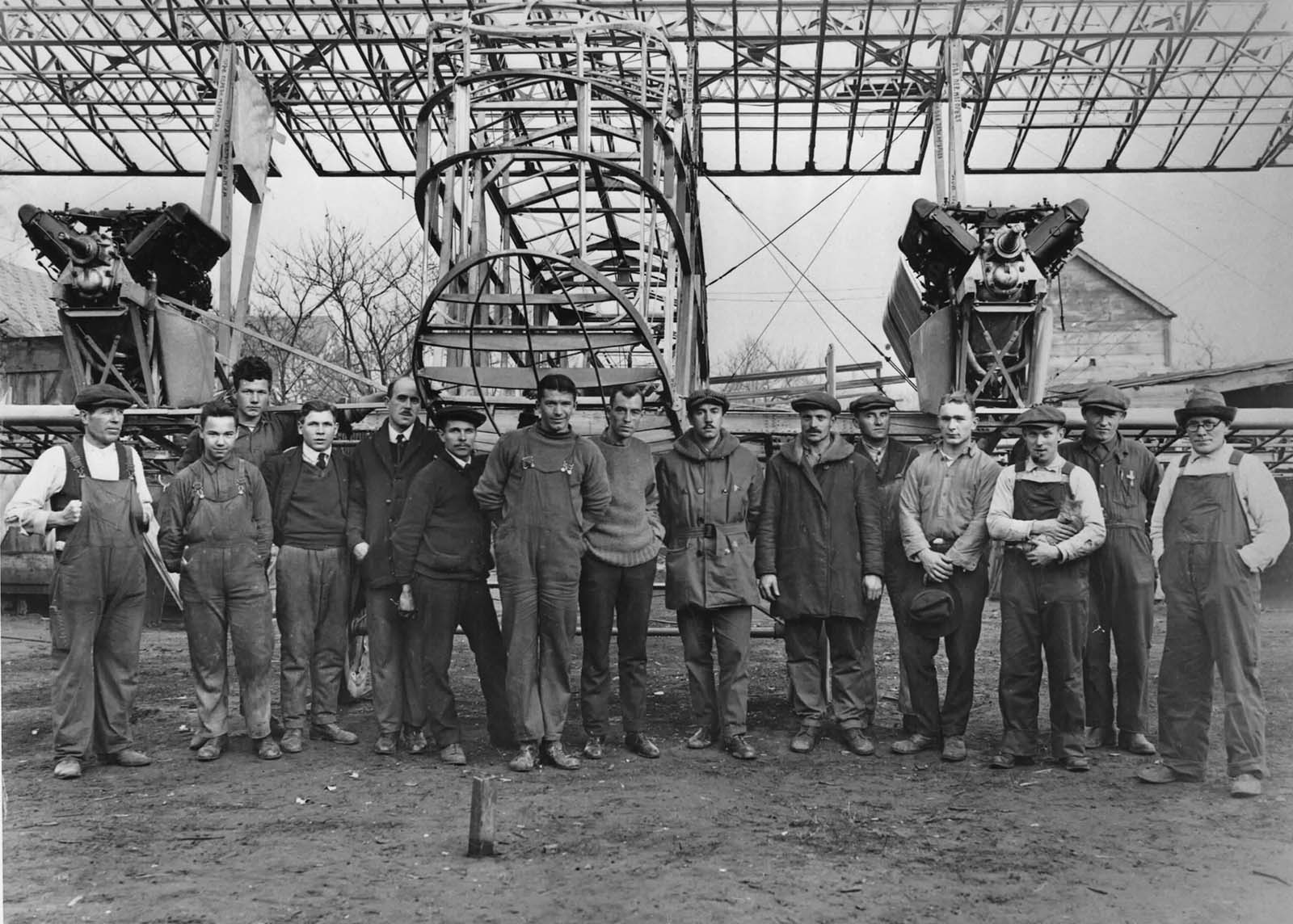
The S-29-A was the first of Igor Sikorsky’s aircraft that was manufactured in the United States. The designation 29 represented the order in succession of Sikorsky aircraft designs, and the A signified its development in America. The earliest construction occurred at “Plant No. 1”, a crude “factory” established on the farm of one of Igor Sikorsky’s friends, Victor Utgoff, near Roosevelt, Long Island, NY. A small wooden shed and a chicken house were the only shelter for indoor construction, otherwise all assembly was performed outdoors. Not only were aircraft parts fabricated, but also unique tools for construction, handmade to serve a particular function. Budget was so constrained, much of the airframe structure was built from scrap metal scavenged from junkyards, and “[rivets] were later retrieved from the [stomachs of] chickens who then graced the dinner table each Saturday night”. The workforce often consisted of many volunteers, ranging from local onlookers curious about the project, to former Russian officers and veterans with extensive engineering education and talent who had similarly fled during the Bolshevik Revolution.
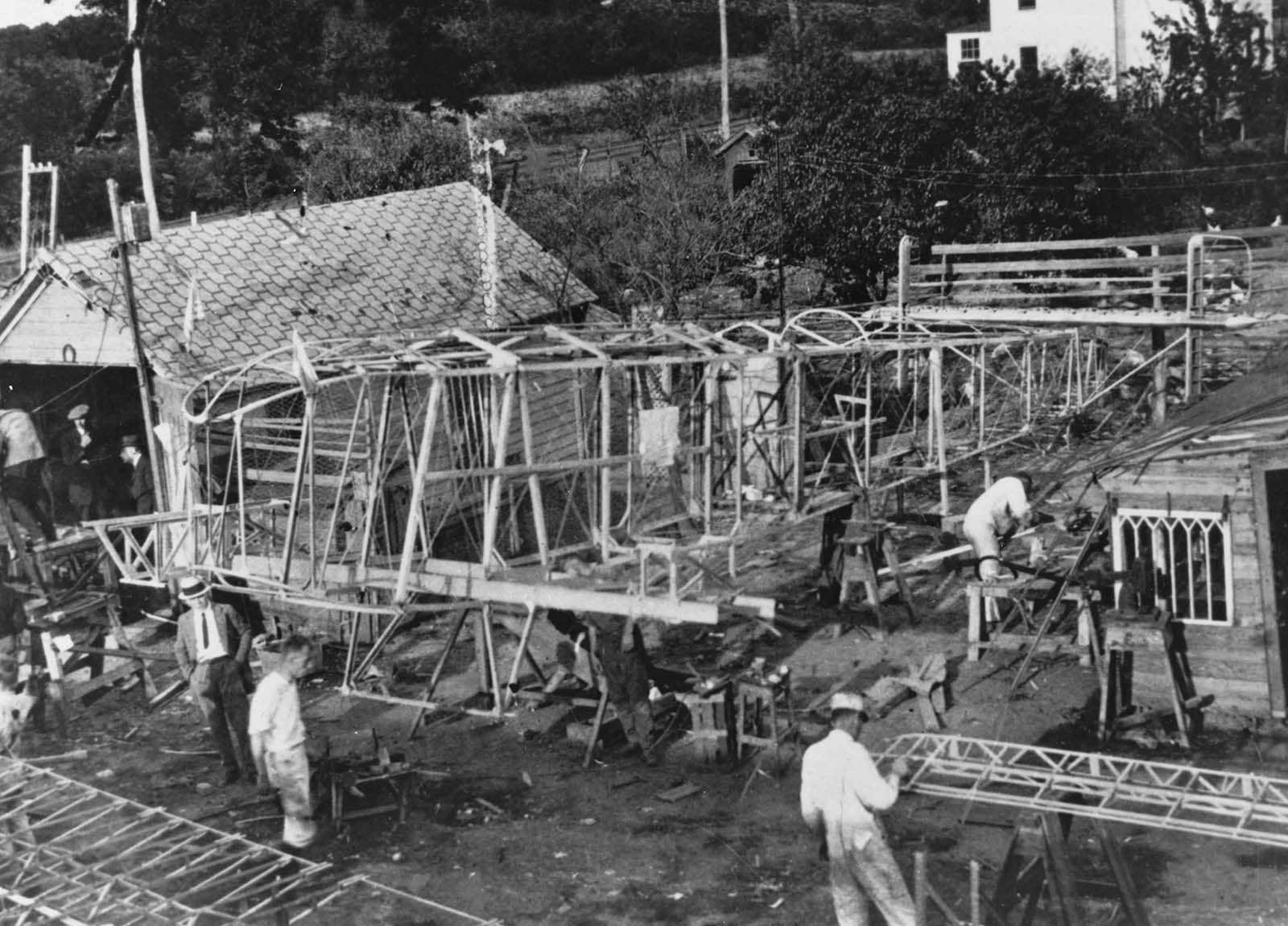
As the winter of 1923 approached, Igor Sikorsky rented hangar space at the nearby Roosevelt Field near Westbury Long Island (ten miles north of the Utgoff farm) to complete assembly of the S-29-A. This move was made possible by a generous gift in the amount of $5,000 from Russian composer Sergei Rachmaninoff. Construction continued on the S-29-A throughout the winter, until finally in May 1924, it was completed.
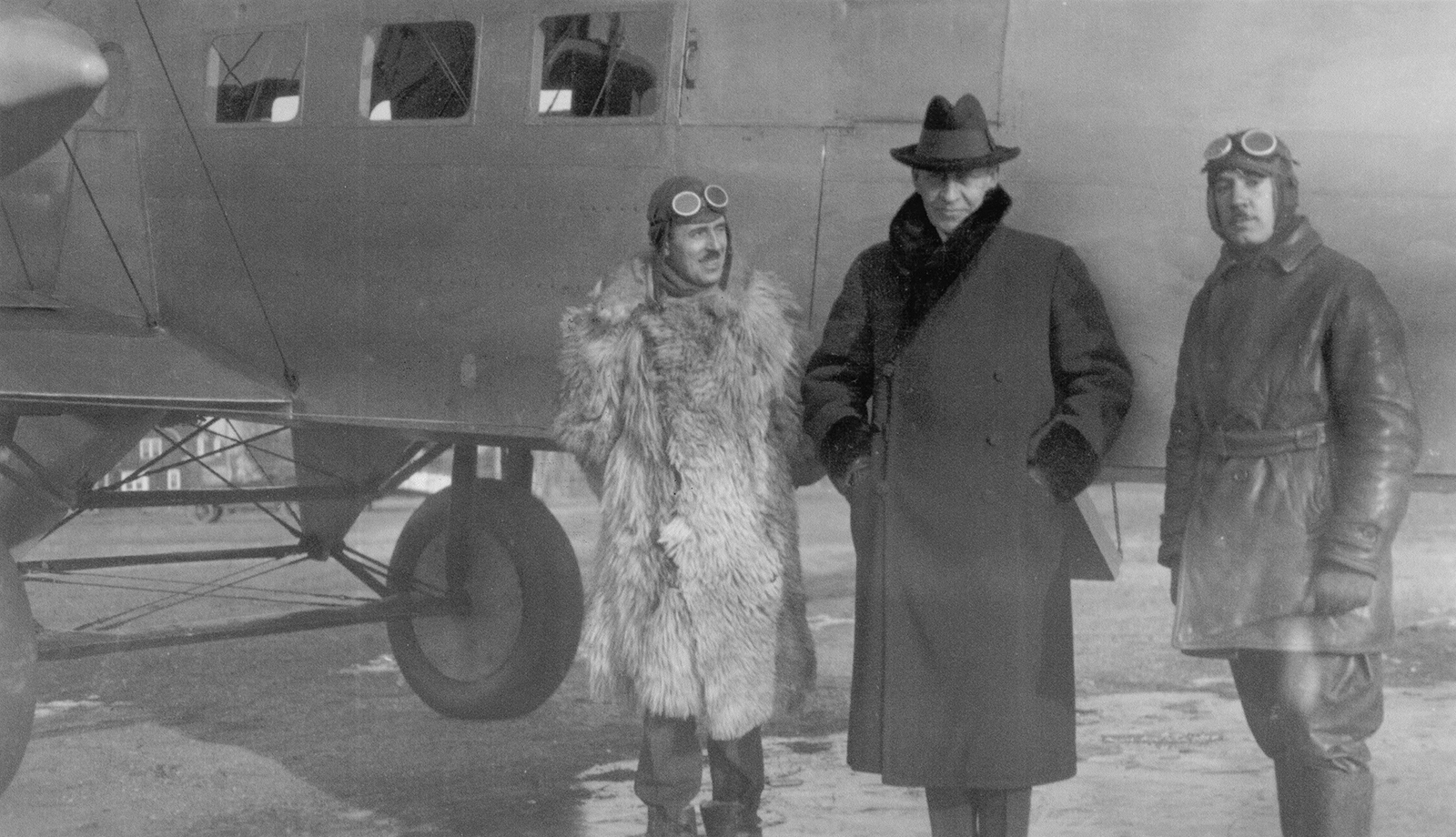
First flight of the S-29-A occurred on May 4, 1924. Unfortunately, the aircraft was underpowered with its two 300-horsepower Hispano Suiza engines (Igor suspected this might be the case, but wanted to allow his eager eight most dedicated workers to partake in the first flight). The aircraft only reached an altitude of 100 ft, and soon after crash landed in a nearby golf course after one engine failed. No personnel were injured, but the aircraft sustained substantial damage, and had to be carried back to Roosevelt Field for repairs.
After extensive negotiating with the stockholders (in a meeting in which Igor Sikorsky locked the doors and forbid anyone from leaving until funds had been pledged), the team was granted the necessary $2,500 to upgrade the engines to two 400-horsepower Liberty engines. On September 25, 1924, the S-29-A made its first successful flight (and with only three additional men on-board). In the following days, many more crew and stockholders were treated to flights aboard the S-29-A. So successful was Igor’s long-awaited first American design, a New York newspaper described it as “a triumph of Russian ingenuity and perseverance”.
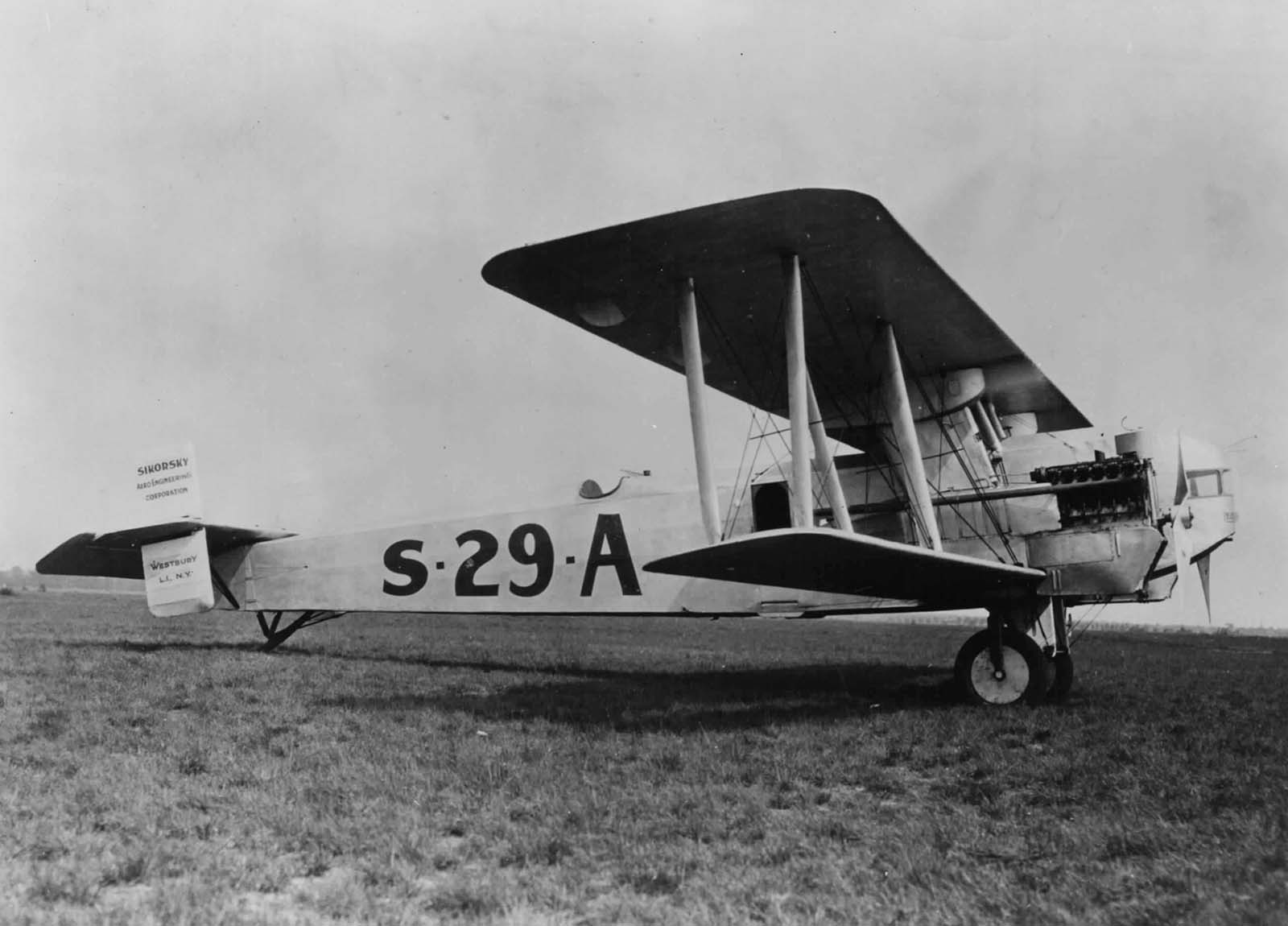
To help establish his name and reputation within the U.S. industry, Igor Sikorsky performed demonstration flights of the S-29-A for the public, military, and press. By the end of 1924, the plane had flown over 420 passengers across a series of 45 flights (totaling just under 16 hours cumulatively). One such flight was to conduct performance tests, led by New York University Aeronautics professor Alexander Klemin and a group of five students, to study cruise performance with only one engine, the results of which ended up being published in Aviation magazine.
The following year, the S-29-A made further demonstration flights and its first contracted cargo jobs, which helped bring Sikorsky Aero Engineering Corporation its the first real revenue. The S-29-A performed one flight transporting two baby grand pianos from New York to Washington DC (one delivered to the wife of President Herbert Hoover and the other to a department store). World War I ace pilot Harold Hartney proposed establishing a commercial airline connecting the major metropolitan cities. The aircraft was even used for airborne photography. The most notorious photo flight involved Igor’s nephew Jimmy Viner, sitting strapped out on a wing tip, to snap pictures of New York City.
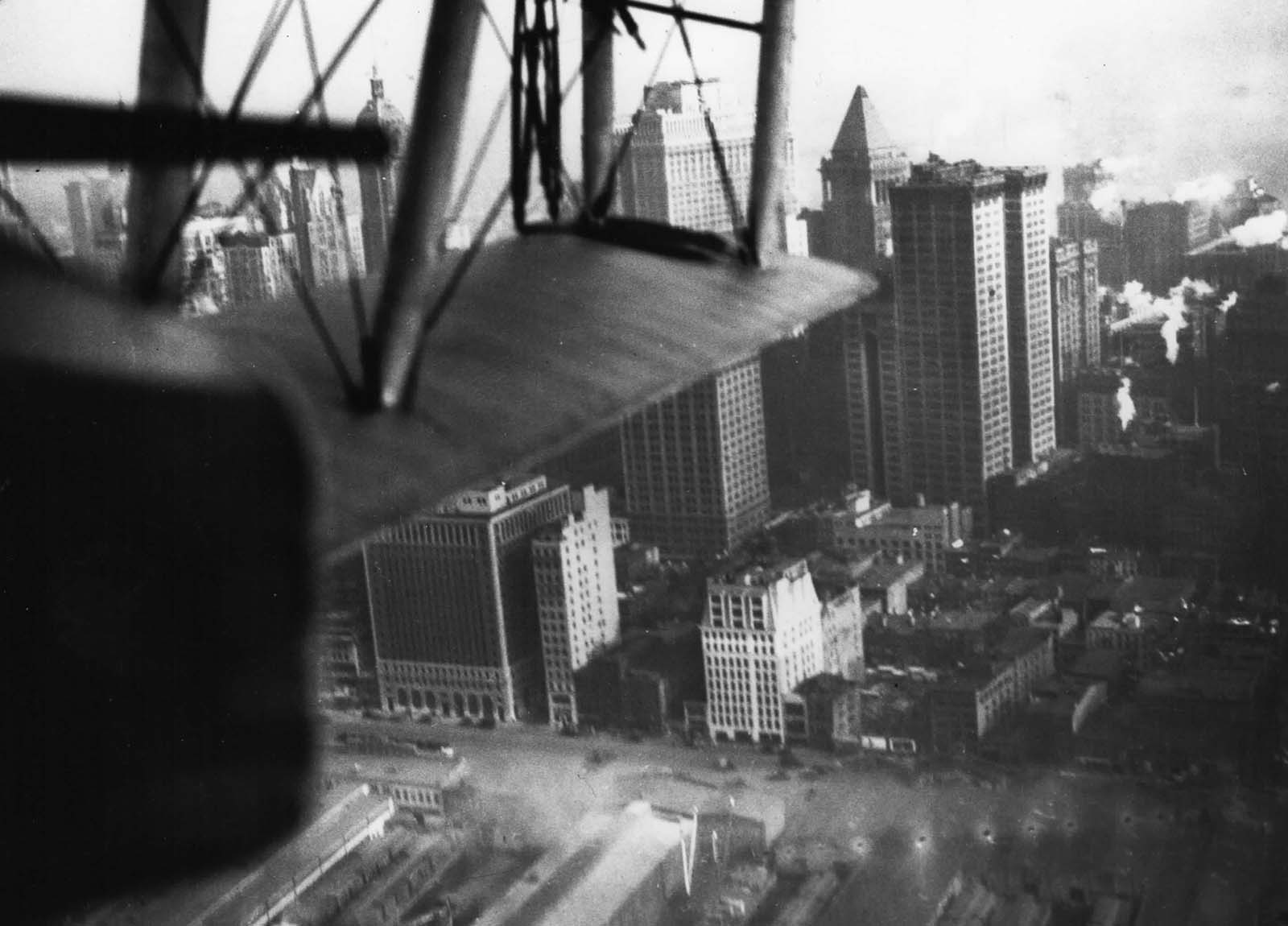
Igor Sikorsky piloted the S-29-A more than two hundred times, although its very successful career wasn’t without risk or incident. One evening, on a return flight from Staten Island, dusk fell upon the crew sooner than expected. The aircraft was not equipped for night flight, and Roosevelt field was not illuminated (ground crew failed to light a signal flare), resulting in the aircraft overshooting the field. Realizing this, Igor decided to land the aircraft. Despite one rough bump on the descent, the aircraft was safely landed. Upon inspection, Igor discovered a tree branch protruding from one wing, indicating a likely near-miss of a tree. After that sobering experience, Igor Sikorsky placed the branch in his office, where it still resides to this day, as a symbol of fate.
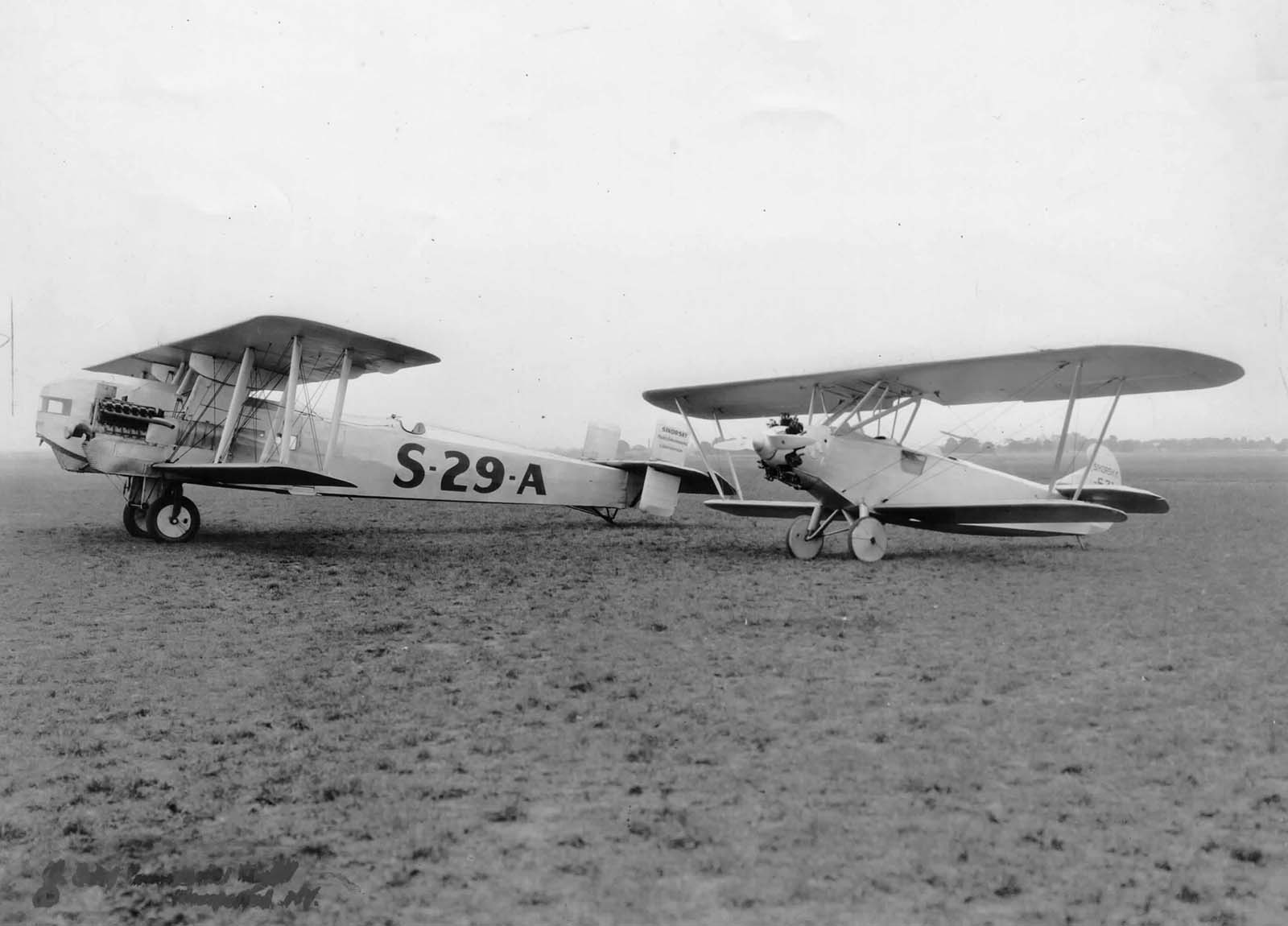
Despite the widespread success of the S-29-A, there was unfortunately not yet a market for large transport aircraft, and so the Sikorsky Aero Engineering Corporation received no contracts for the plane. In 1926, the S-29-A was sold for $11,000 to racing pilot Roscoe Turner, who went on to use the plane for advertising and charter flights. In 1928, it was sold to its final owner, Howard Hughes, who modified the plane to resemble a German Gotha bomber for the filming of the movie “Hell’s Angels”. For this, the S-29-A made its final flight, which concluded with a spectacular fiery crash.
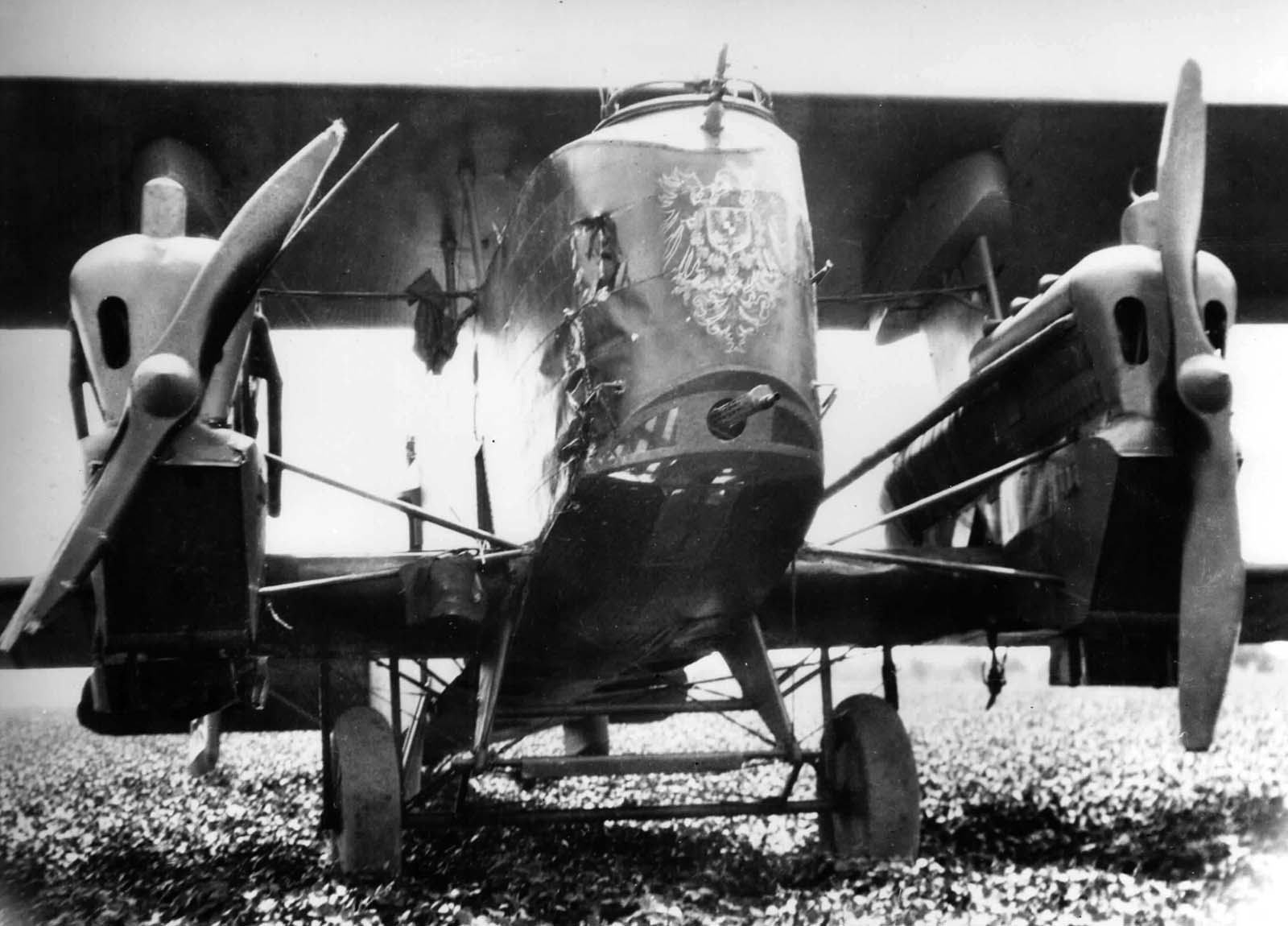
Although no contracts were awarded for the S-29-A, it’s successful reputation as a prototype commercial aircraft, combined with the enacting of the Contract Air Mail Act (or Kelly Act) in February 1925, for the Post Office Department to award airmail service contracts to private airlines, provided a promising opportunity for investment and security within the commercial aviation industry.
An all metal sesquiplane, much of the airframe was assembled from repurposed scrapyard finds. The fuselage main structure was built out of angle irons from discarded bedsprings. Duralumin covered the fuselage and wings. But despite its cobbled build, the S-29-A was described as being “an attractive aircraft for its day, with straight lines and a trim, sturdy look”.
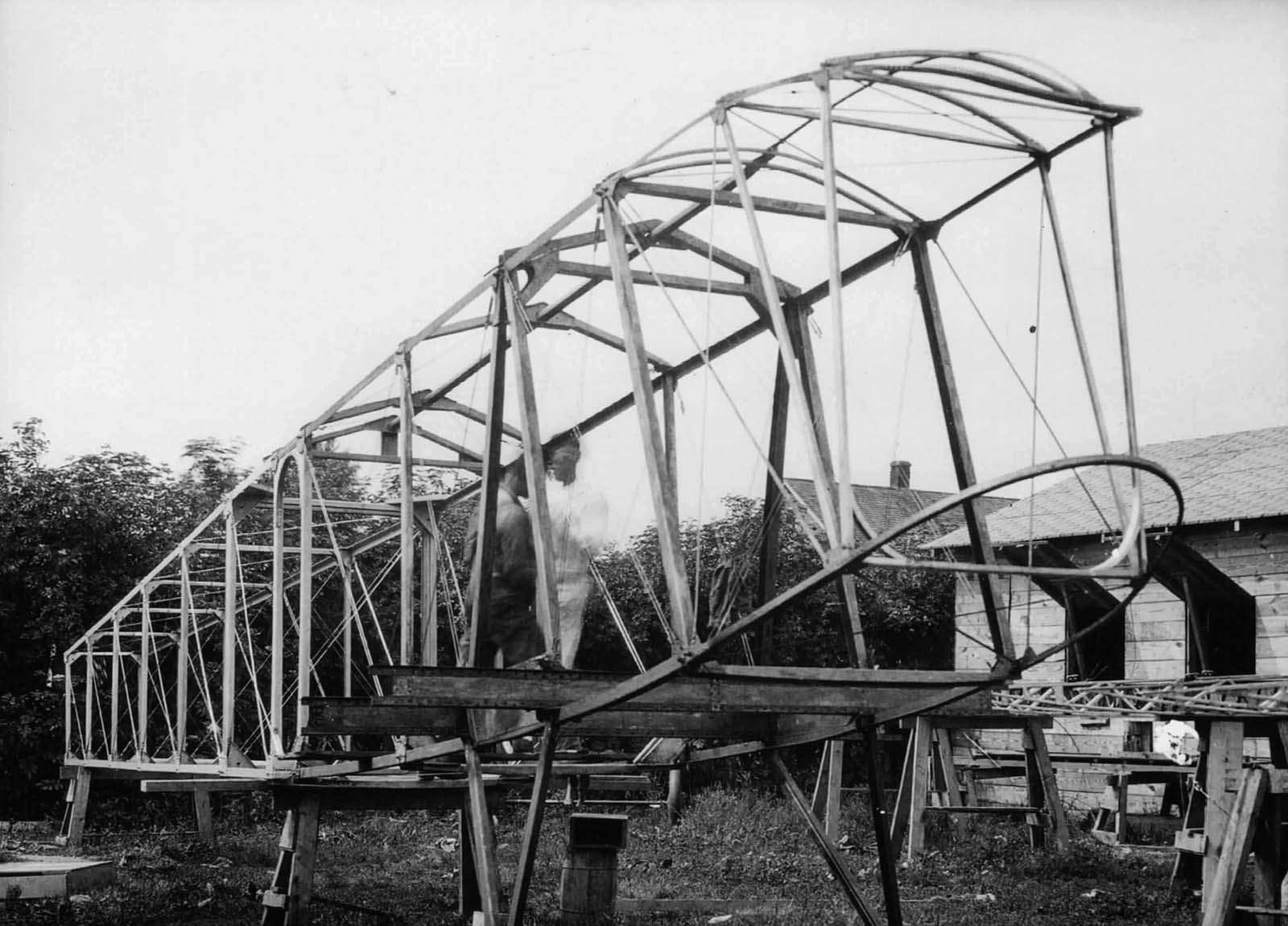
Two 300-horsepower Hispano Suiza engines were originally installed on the S-29-A. Although they were suspected to be inadequate, they were all that Igor Sikorsky could afford, purchased at $250 per engine from a war surplus store. Later, these powerplants were replaced by two 400-horsepower Liberty engines. The enginers were mounted from the lower wing, with the forward wooden propellers nearly in-line with the nose.
The landing gear of the S-29-A was the conventional two forward wheels with an aft tail skid.
The cockpit of the S-29-A was open, with the pilot seated farther aft (closer to the tail than the nose).
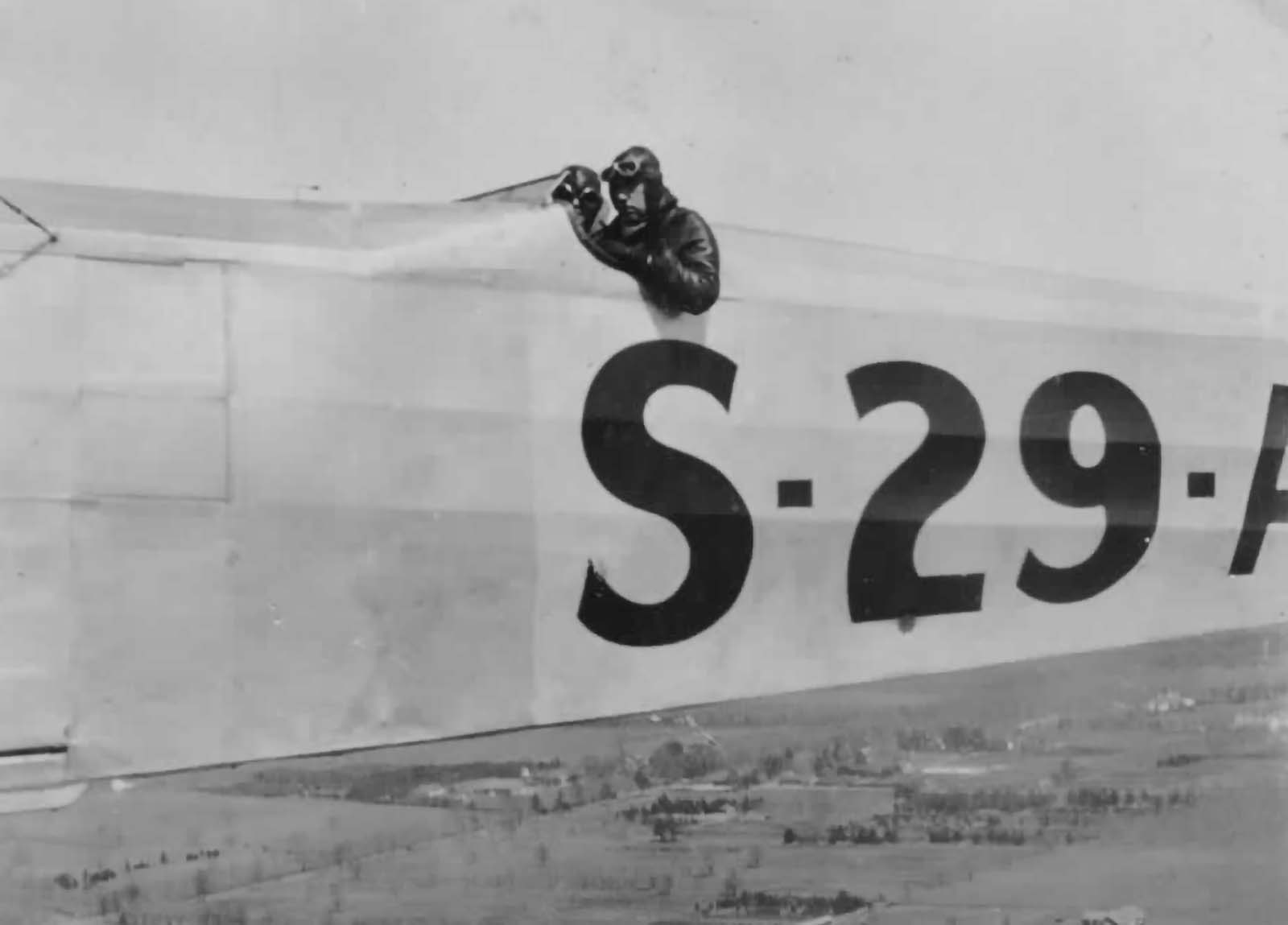
The 14-passenger cabin spanned from the front end of the fuselage to just aft of the wings and had large horizontal windows on either side.
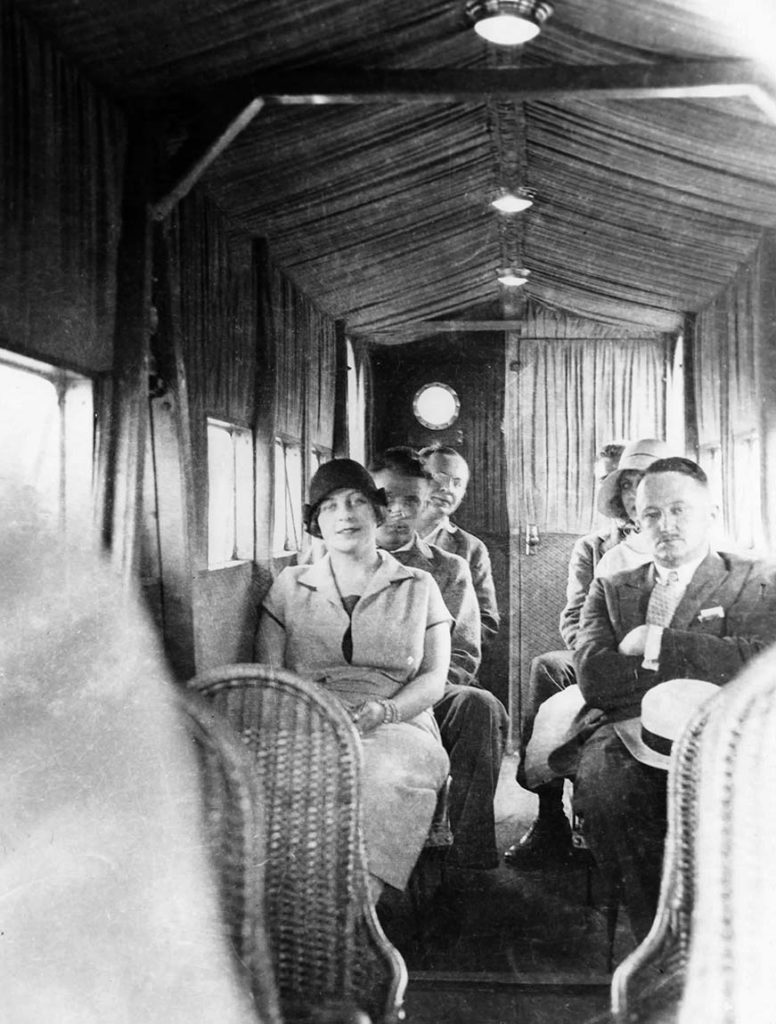
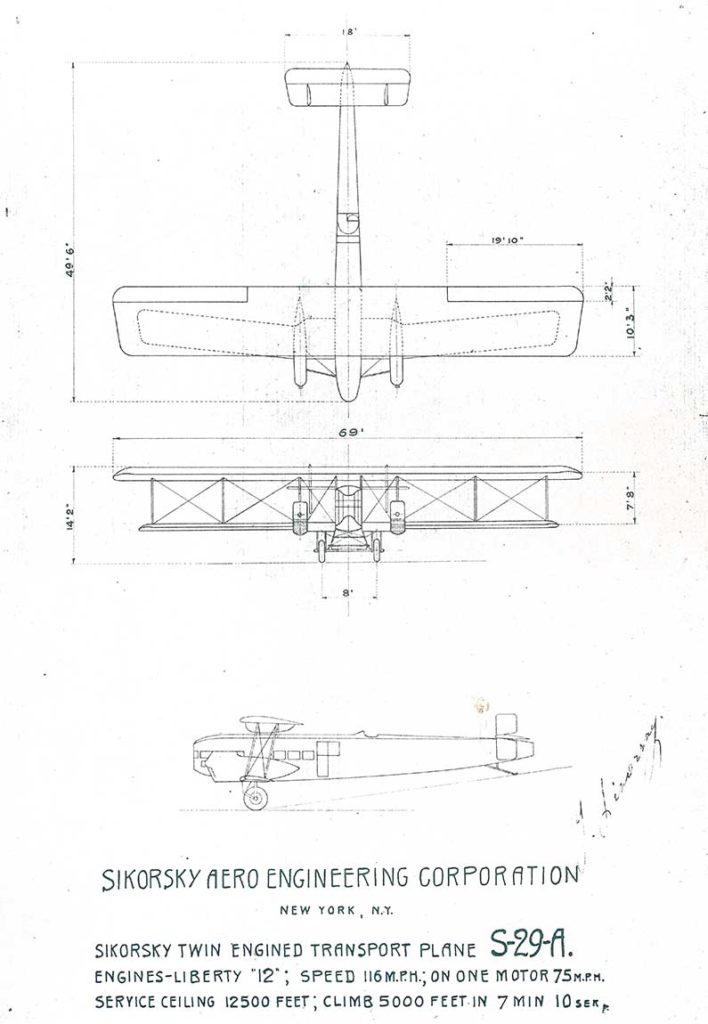
| Performance – Standard Day at Sea Level | |
|---|---|
| High Speed | 116 mph / 100.8 kts / 186.7 km/hr |
| Cruising Speed | 100 mph / 87 kts / 161 km/hr |
| Service Ceiling | 12,500 ft / 3,810 m |
| Weights | |
|---|---|
| Weight Empty | 7,775 lbs / 3,527 kg |
| General Data | |
|---|---|
| Crew Seating Capacity | 1 pilot |
| Seating Capacity | 14 passengers |
| Powerplant Ratings Standard Day at Sea Level | |
|---|---|
| Hispano Suiza | 300 hp / 223.7 kw |
| Liberty | 400 hp / 298.3 kw |
| Aircraft Dimensions | |
|---|---|
| Span, Upper Wing | 69 ft / 21 m |
| Span, Lower Wing | 62 ft 6 in / 19 m |
| Length Overall | 49 ft 10 in / 15.2 m |
| Height Overall | 13 ft 6 in / 4.1 m |
| Total Wing Area | 992 sq. ft / 92.2 sq. m |
| Loading per Horsepower | 15 lbs / 6.8 kg |
No S-28 aircraft were ever produced.
One S-29-A was produced
by Dana Halline

Igor Sikorsky’s office has been preserved as when he occupied it from 1956 to 1972. This issue highlights the artifacts in his office collected during his career.
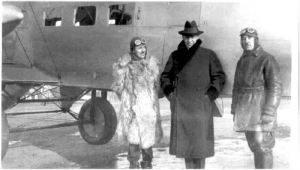
In the fall of 1923, Russian aviation pioneer and designer Igor Sikorsky was facing economic disaster while developing the S-29-A. Sergei Rachmaninoff stepped in at this time with a critical investment.
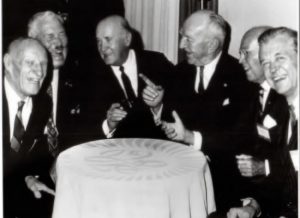
Igor Sikorsky’s predictions for air travel in general and for helicopters in particular have been largely realized or surpassed.
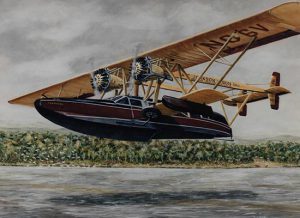
This issue of the newsletter illustrates some of the artistic variations in the exterior color schemes of aircraft delivered during Igor Sikorsky’s three careers.
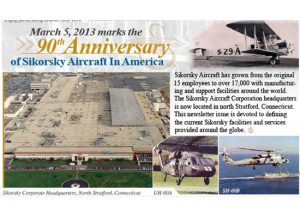
Sikorsky Aircraft evolved from humble beginnings on a farm on Long Island, New York with 15 employees.
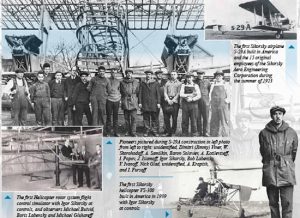
Sikorsky Aircraft was created by aviation pioneers during their early years in America.
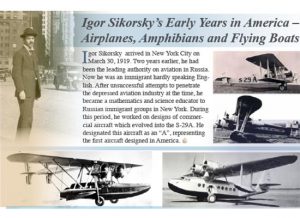
Igor Sikorsky’s developed aircraft, amphibians and flying boats during his early years in America.